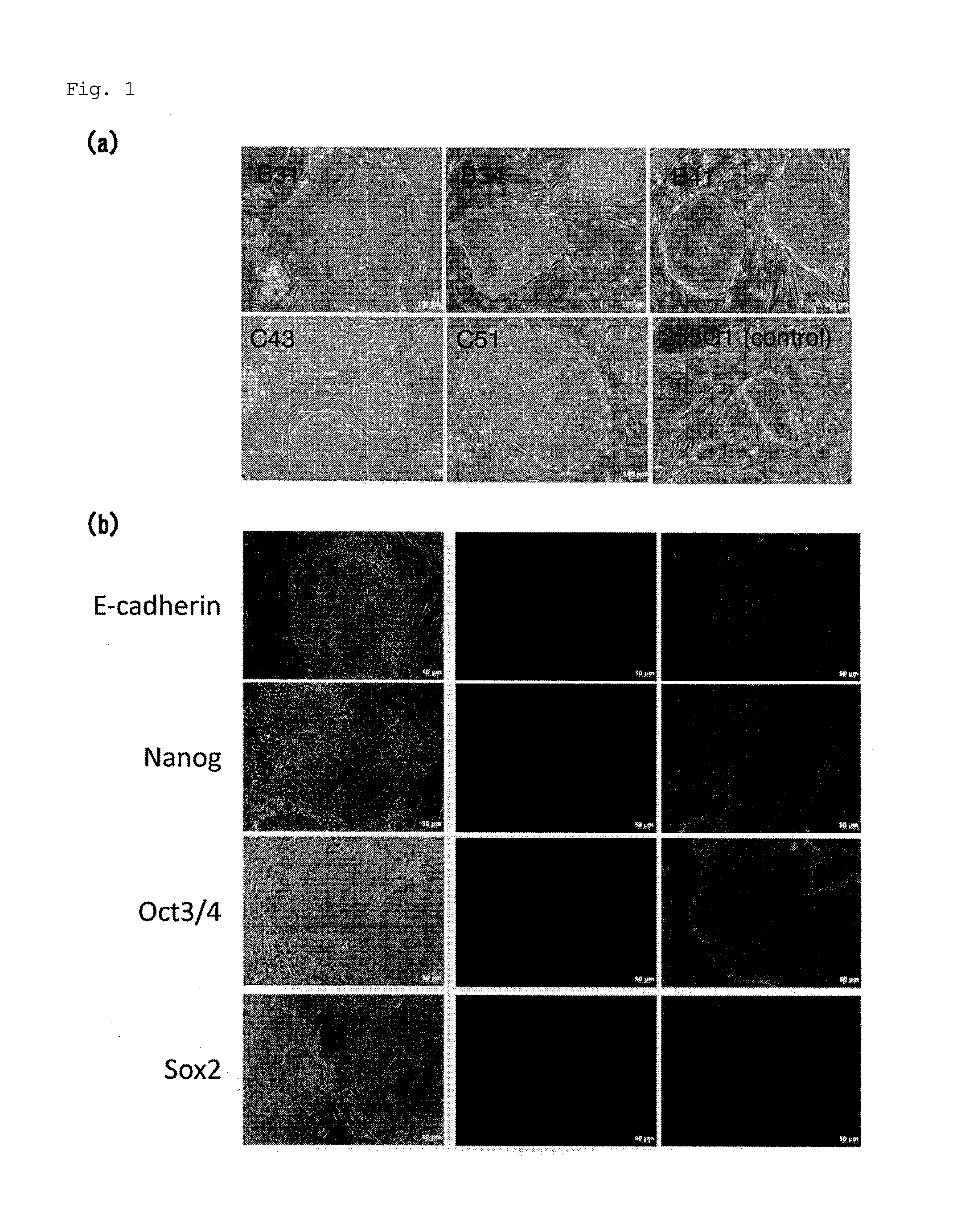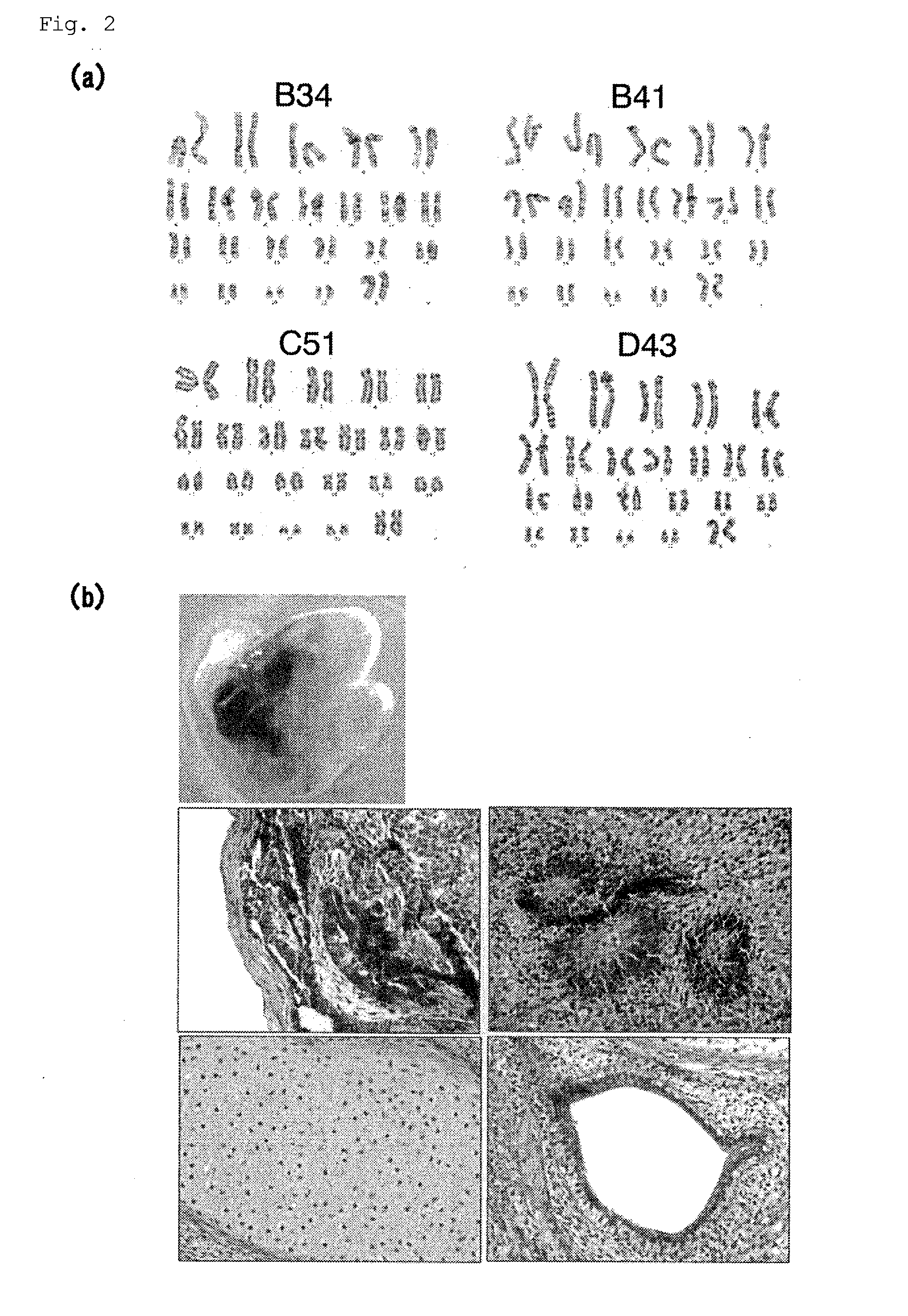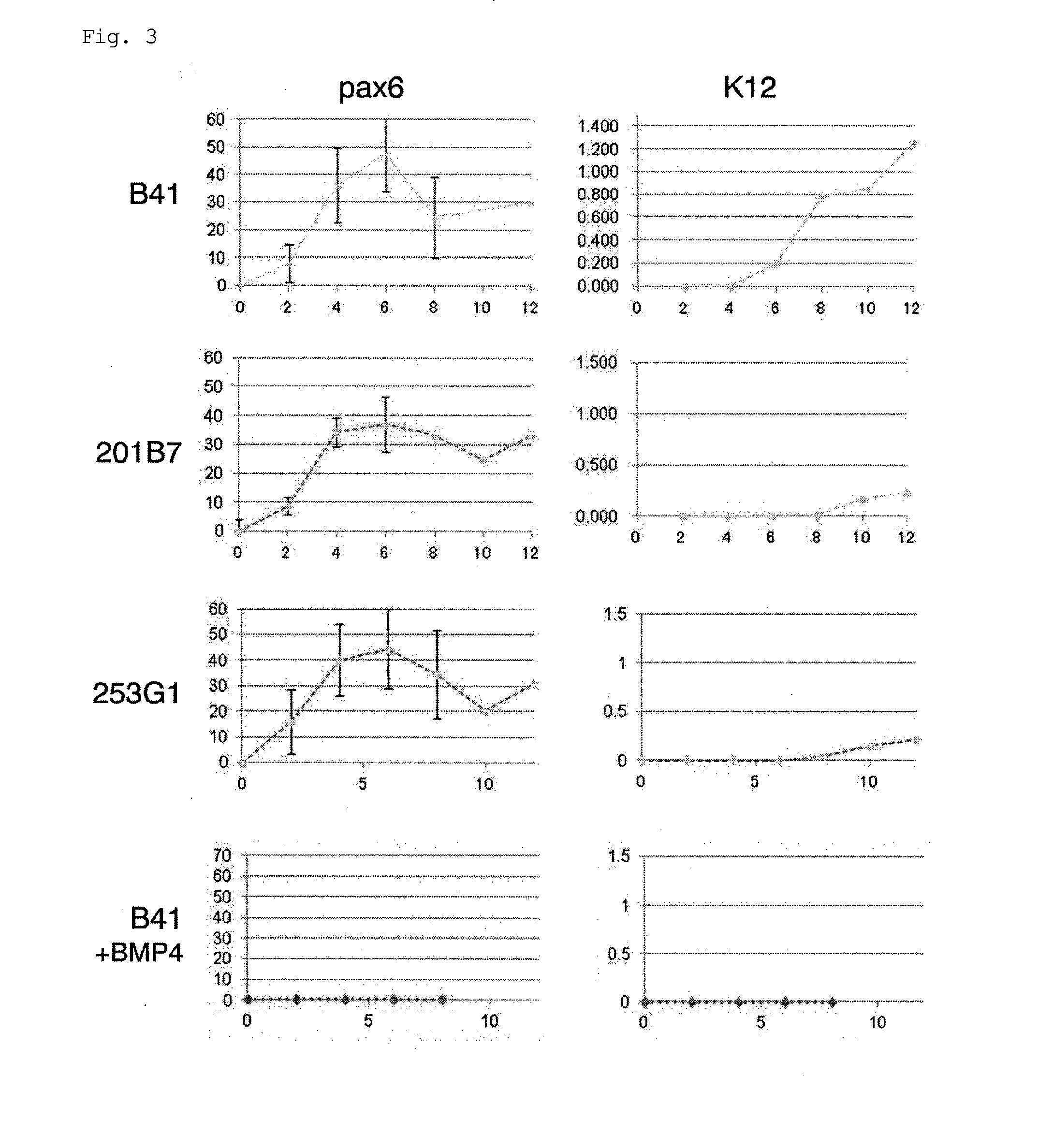iPS CELL HAVING DIFFERENTIATION PROPENSITY FOR CORNEAL EPITHELIUM
a technology of corneal epithelium and ips cell, which is applied in the field of ips cell having differentiation propensity for corneal epithelium, can solve the problems of corneal opacification, loss of original transparency, irreversible dysfunction, etc., and achieve the effect of improving corneal regenerative medicine and safety superior
- Summary
- Abstract
- Description
- Claims
- Application Information
AI Technical Summary
Benefits of technology
Problems solved by technology
Method used
Image
Examples
example
[0105]Hereinafter, the present invention will be described in detail with reference to the Example. However, the scope of the present invention is not limited thereto.
I: Generation of iPS Cells Originated from Ocular Surface Epithelial Cells
[0106]From imported sclerocorneal pieces for use in research, human-derived corneal endothelial cells, peripheral connective tissues, etc., were removed, and only the corneal-conjunctival epithelial layers on the ocular surfaces were isolated by dispase treatment. The obtained epithelial cells were dissociated into single cells by trypsin treatment and cultured in a medium containing a culture supernatant of NIH / 3T3 cells and a fresh KCM in a 1:1 ratio.
[0107]Subsequently, the proliferated epithelial cells orginated from ocular surfaces were transfected with lentiviral vectors into each of which, human Oct3 / 4, Sox2, Klf4, and c-Myc (Yamanaka 4 factors) were individually introduced. Two to four days after the transfection, the resulting cells were ...
PUM
| Property | Measurement | Unit |
|---|---|---|
| transparency | aaaaa | aaaaa |
| transparency | aaaaa | aaaaa |
| temperature | aaaaa | aaaaa |
Abstract
Description
Claims
Application Information
 Login to View More
Login to View More - R&D
- Intellectual Property
- Life Sciences
- Materials
- Tech Scout
- Unparalleled Data Quality
- Higher Quality Content
- 60% Fewer Hallucinations
Browse by: Latest US Patents, China's latest patents, Technical Efficacy Thesaurus, Application Domain, Technology Topic, Popular Technical Reports.
© 2025 PatSnap. All rights reserved.Legal|Privacy policy|Modern Slavery Act Transparency Statement|Sitemap|About US| Contact US: help@patsnap.com



